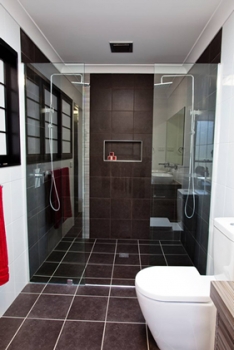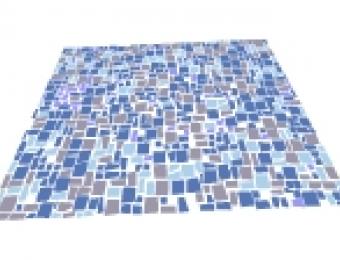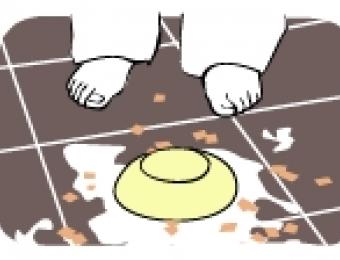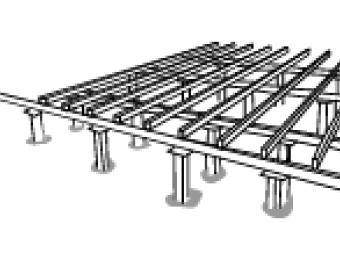How are bathroom floors used?
The bathroom is going to be the wettest area in your whole house. This is where everyone in your household will come to wash and dry themselves, and prepare for the day. Your bathroom floor will see a lot of foot traffic, and most of it will be barefoot. The bathroom will be used heavily early in the morning and late at night, and not all that much in between, meaning that there's a fair chance it'll get quite wet at times.

Image courtesy of Caroma.
What to look for in bathroom floors
Because they see a lot of water, there are some very important considerations that need to be taken into account when you choose your flooring surface. You will need a floor covering in your bathroom that is:
- Easy to waterproof
- Resistant to moisture
- Comfortable for bare feet
- Traction in wet conditions to avoid slips and falls
Keeping the floor waterproof and sealed is very important. Water leakage can damage a floor very quickly if it's left untreated, and can also undermine the foundations of your home. While a waterproof membrane is normally required for the entire bathroom floor, the floor surface you choose will act as the first line of defence against water damage, so it's important that it's tightly sealed.
The floor should be slightly sloped so that water runs off towards a centrally installed drain in the floor too, to prevent water from pooling and creating a hazard. The floor surface you choose should have great traction in wet conditions; slips and falls in a bathroom where there may be a lot of glass or heavy solid objects and corners can be extremely dangerous. If you're going for a tiled floor, you need to ensure that you use floor tiles rather than wall tiles. Floor tiles are specifically designed to be slip-resistant.
Your floor should also feel good underfoot when stepping out of a hot shower; some heat retention is a good thing, and some people opt for under-floor heating in their bathroom to add a bit of comfort. Having some degree of cushioning is nice too, but not necessary.
Other considerations
Regardless of how big your bathroom is, the floor should be easy to keep clean and hygienic with a quick sweep and mop. It is also one of the rooms most likely to attract attention, and a decent bathroom can drastically increase the value of a property so choosing an attractive floor is important.
When deciding on colours, remember that bathrooms need to be well lit both for safety and to allow people to see themselves clearly in the mirror. A lightly coloured floor (or one that has a reflective texture) will help to reflect light around the room. Darker or less reflective floors can have the opposite effect.
Which floor coverings are appropriate for bathrooms?
Tiles and vinyl are equally as suitable as choices for surfaces on modern bathroom floors. Both offer a huge variety of styles and options, both can be easily made waterproof, and both provide good traction for bare feet in wet conditions. Floor tiles will last a lot longer than vinyl, often enduring for the life of the house, but may be more costly and will require a sturdier subfloor to sustain the additional weight. Vinyl is susceptible to allowing some leakage to occur around edges and corners too, if the floor is not angled properly. Tiles require regular grout maintenance to ensure the seal is watertight.
Other options you may wish to consider for your bathroom floor include wood floorboards (specially sealed), stone, cork tiles and linoleum.





